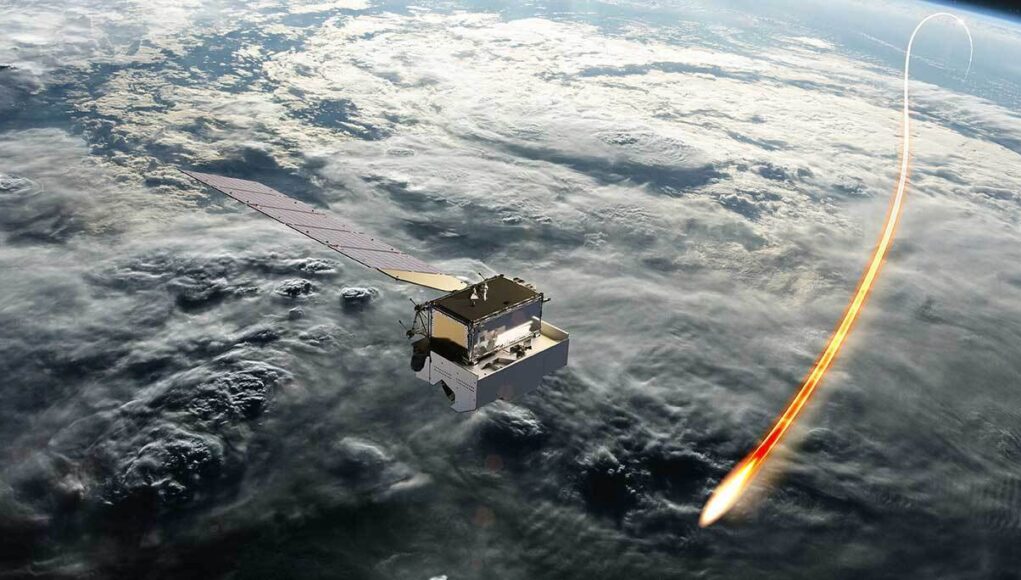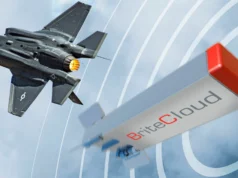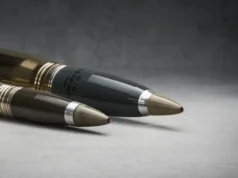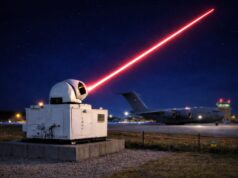L3Harris Technologies has advanced its latest missile warning and tracking system into production following the completion of Critical Design Review and Production Readiness Review for the U.S. Space Development Agency’s (SDA) Tranche 2 Tracking Layer, according to a press release.
The milestone moves the programme closer to deployment as part of a next-generation layered defence architecture designed to detect, track and target advanced missile threats in real time.
“L3Harris is committed to working closely with SDA to put proliferated missile warning and tracking capability on orbit as quickly as possible,” said Rob Mitrevski, President, Golden Dome Strategy and Integration at L3Harris. “We demonstrated that L3Harris’ production design approach achieves both of SDA’s pillars of proliferation and spiral development. Our relentless pursuit of continued design improvement at scale is how L3Harris will answer the President’s call for a robust constellation of space-based sensors that can defend our nation against complex threats.”
The Tranche 2 Tracking Layer design incorporates space and ground systems capable of global coverage with low latency. Production facilities are already manufacturing major assemblies for the space vehicles, building on previous designs from SDA’s Tranche 0 and Tranche 1 programmes, as well as the Missile Defense Agency’s Hypersonic and Ballistic Tracking Space Sensor satellites.
L3Harris is delivering capabilities across all three tranches of SDA’s Proliferated Warfighter Space Architecture, a network of low Earth orbit satellites intended to provide near-global missile warning, tracking and defence. The company is also building eight electro-optical infrared payloads for SDA’s Fire-control On Orbit-support-to-the-war Fighter programme.
The company has invested heavily in its U.S. manufacturing base, including $250 million to expand and modernise facilities in Indiana, Florida and Massachusetts to support space-based missile defence production.














We should look at add infrared missile tracking to the ISTARi constellation. It’s fairly low cost as it can be done by just two satellites in highly elliptical orbits and it’s probably the main capability we are missing for our own missile defence.
We probably should also consider a wider program with European partners for a wider coverage from low earth orbit satellites that can track smaller tactical launches.
I’m civilian here, can we actually afford an anti missile ‘dome’ gold or iron ? To me the enemy will always be able to send many more cheaper missiles than we can reply with expensive anti missiles. I love the orange one choosing gold that is such a tough material analogy (not)
In reality it’s quite hard to attack the UK with cheap missiles.. we are a long way from any enemy so they either have to use expensive long range missiles or move the thing carrying the missiles close to harms way.
So really what you are defending against is a first day sneaky attack may be using drones from merchant shipping and then long range missiles and aircraft intrusion which are not cheap or in high numbers.
Thank you Jonathan for your reply. Yes can see drone attack as a first day attack or even deniable attack if launched locally in uk against uk targets. The dome idea of protecting a country from missile attack just appears to be unrealistic. Agree Isreal done ok but against fairly tame missles/ rockets and at what financial cost. Plus Isreal is compact area to protect.
Spot on Simon I think it’s worth looking back at Reagan and the Starwars project and how what sounded like futuristic science fiction then now looks almost laughable in its overblown expectations. Doesn’t mean some of the technology that came out of it hasn’t proved very useful but in the end that’s all you get for the most part, what you don’t get, but is being mythically projected from the top is a screen that will keep the US totally safe. I guess claiming the billions, perhaps trillions invested will keep you a bit more safe and help some hopefully to survive into the nuclear winter doesn’t have quite the same ring about it nor does it make the man with the tacky golden gun quite so omnipotent even to the forgiving fanboys let alone voting public.
Given the dense nature of the UK it’s well with in existing technology to form a missile shield over the UK. Around 8 ABM systems would cover nearly 75% of populated areas.
It’s much harder to cover the USA as Trump proposes because it’s much larger with much more urban sproll.
Any missile heading to the USA will be a high flying ICBM where as the UK much more likely to be targeted by IRBM’s.
Depends on your perspective, it will pur coubts in an enemy’s mind so enhancing deterrence and it will offer a level of defence but in reality especially over continental US it’s only going to have a marginal effect if mass nukes are being thrown about simply because of the devastation of those that inevitably get through. One only has to look at the Israeli experience defending a very small Country to get an idea of even an upgraded system can offer the US. And when you hear Trump telling Canada how many billions it would have to pay the US to be included it shows just how little understanding he has in regard to making such a system truly effective, though perhaps wanting Canada and Greenland absorbed suggests someone has reminded him of their importance in any such system being effective. In reality this is just another of his grand standing schemes trying to elevate internally and externally what a great and powerful President he is and everyone had better accept it. Its ultimate effect will probably be similar to the gold adornments to the White House all show and impresses the gullible, so about psychological effect in the end with a somewhat unreliable but difficult to determine effect in reality. Good for his propaganda however in terms of MAGA telling everyone that America is now awe struck and respected be it by the tacky Gold in the Oval Office and no doubt new Ballroom or the mythical Golden Dome the great Protector is projecting over America. ‘Plastic’ in both cases might be more appropriate but its effectiveness is everything beneath being tested in a peer hot war.
Spy, I like your understanding of this, politicians can lightly promise domes but not want to understand even if technically feasible / remotely affordable. Absolute arguments for defending critical military sites against 1st day attack agreed.
You can either have a missile defense system, if not then expect to be obliterated, sometime in the future. 😮
The initial cost is not the main worry , it’s the following sustainment, along with the depth of the missile magazine and crucially how quickly the expended missiles can be replaced.
This was the problem that Israel faced with the 2nd ballistic missile strike from Iran. With the first strike, the Iron Dome, supported by US Arleigh Burkes, THAAD and Patriot achieved a greater than 95% interceptions. However by the second strike this dropped to around 80%. As Israel hadn’t replaced their Arrow 2 and 3 missiles in time.
In essence it is far far cheaper, to produce a ballistic missile, that can lob a warhead near enough to the intended target. Compared with producing a very high altitude or low earth orbit interceptor missile, along with the search and tracking radar, not forgetting the combat management system that works out the maths for the interception.
Iran basically fired off sufficient missiles to swamp Israel’s defences. Where they ran out of the Arrow missiles. Which allowed a number to reach their targets or at least be close enough to do some damage.
The question is not can we afford something like Iron Dome, but can we support the costs of sustaining it?